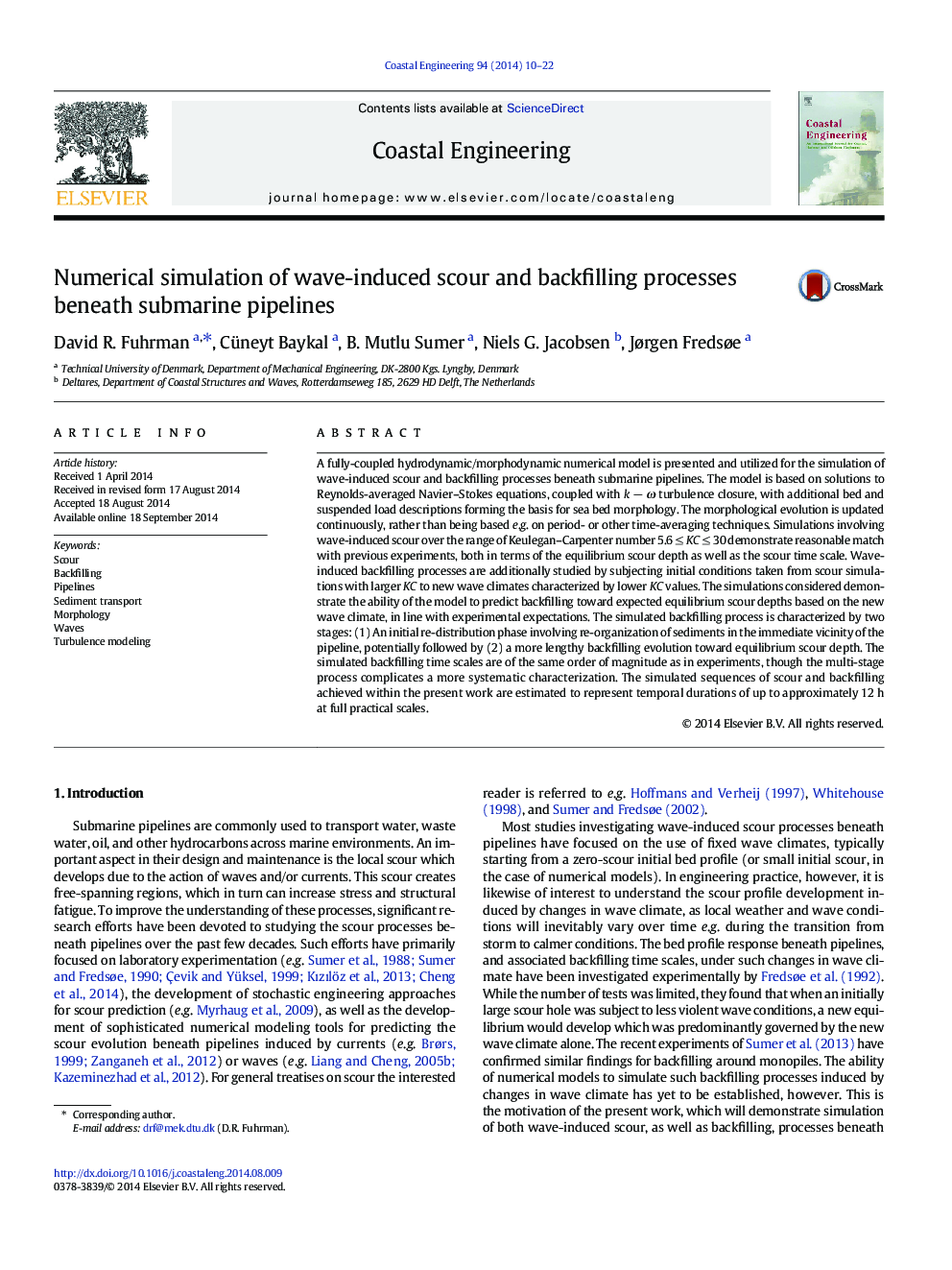| Article ID | Journal | Published Year | Pages | File Type |
|---|---|---|---|---|
| 1720725 | Coastal Engineering | 2014 | 13 Pages |
•Wave-induced scour and backfilling processes beneath submarine pipelines are simulated.•The model accurately predicts both equilibrium scour depths and time scales.•The model accurately predicts backfilling induced by changes in wave climate.•The predicted backfilling scour depths are determined by the new wave climate.•Simulated model-scale sequences represent times of up to O(1 day) at full scale.
A fully-coupled hydrodynamic/morphodynamic numerical model is presented and utilized for the simulation of wave-induced scour and backfilling processes beneath submarine pipelines. The model is based on solutions to Reynolds-averaged Navier–Stokes equations, coupled with k − ω turbulence closure, with additional bed and suspended load descriptions forming the basis for sea bed morphology. The morphological evolution is updated continuously, rather than being based e.g. on period- or other time-averaging techniques. Simulations involving wave-induced scour over the range of Keulegan–Carpenter number 5.6 ≤ KC ≤ 30 demonstrate reasonable match with previous experiments, both in terms of the equilibrium scour depth as well as the scour time scale. Wave-induced backfilling processes are additionally studied by subjecting initial conditions taken from scour simulations with larger KC to new wave climates characterized by lower KC values. The simulations considered demonstrate the ability of the model to predict backfilling toward expected equilibrium scour depths based on the new wave climate, in line with experimental expectations. The simulated backfilling process is characterized by two stages: (1) An initial re-distribution phase involving re-organization of sediments in the immediate vicinity of the pipeline, potentially followed by (2) a more lengthy backfilling evolution toward equilibrium scour depth. The simulated backfilling time scales are of the same order of magnitude as in experiments, though the multi-stage process complicates a more systematic characterization. The simulated sequences of scour and backfilling achieved within the present work are estimated to represent temporal durations of up to approximately 12 h at full practical scales.
